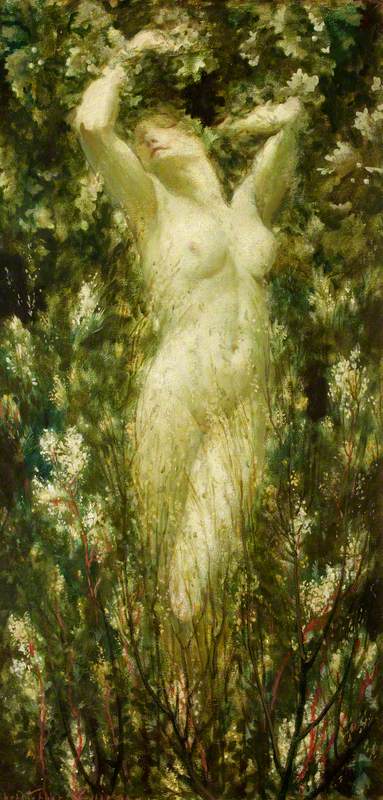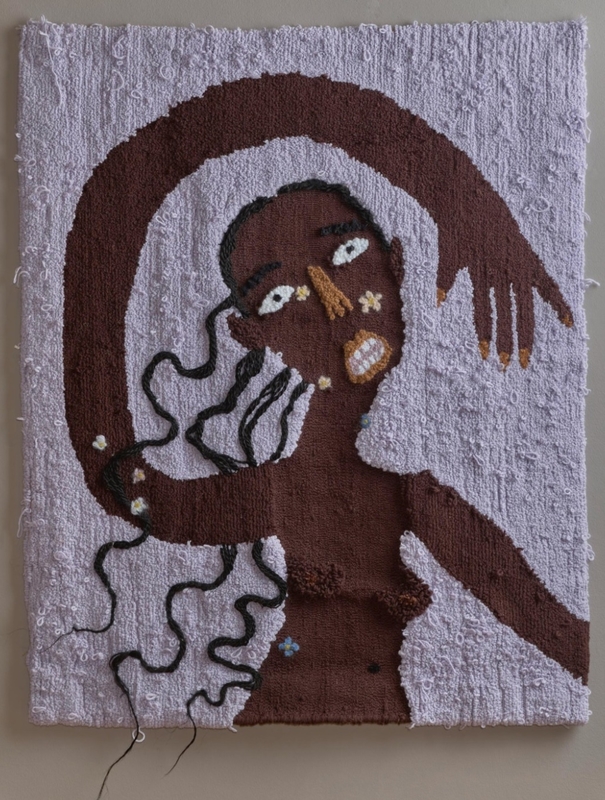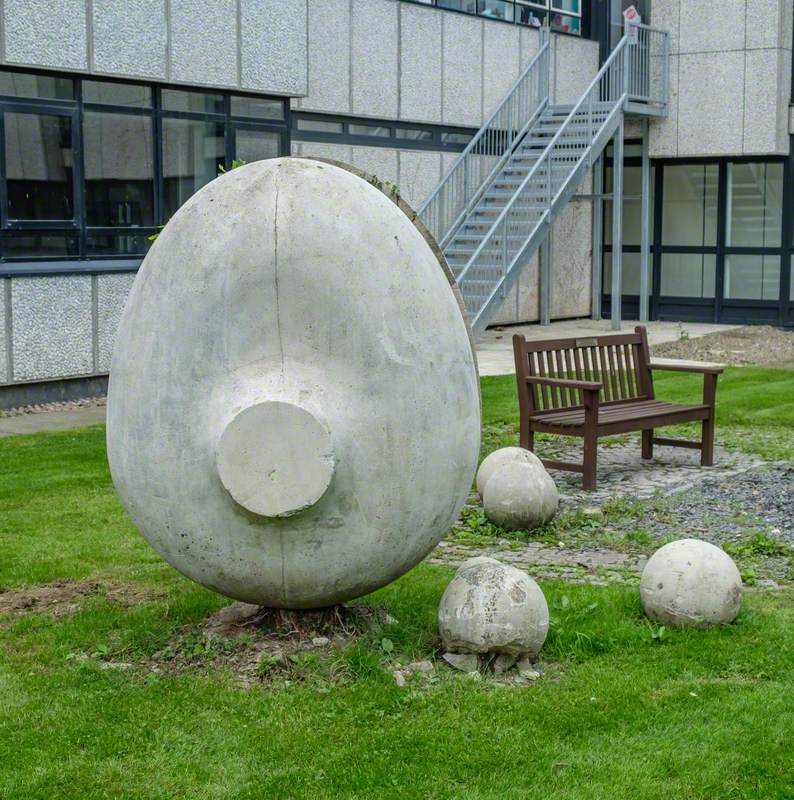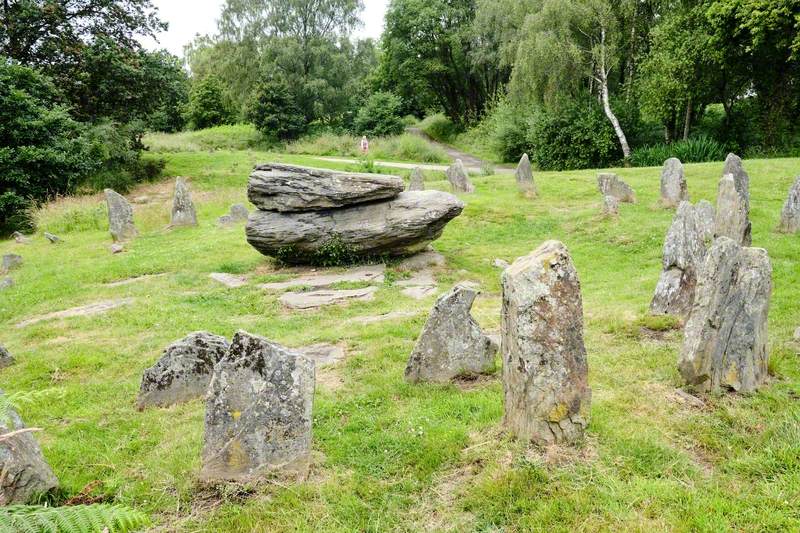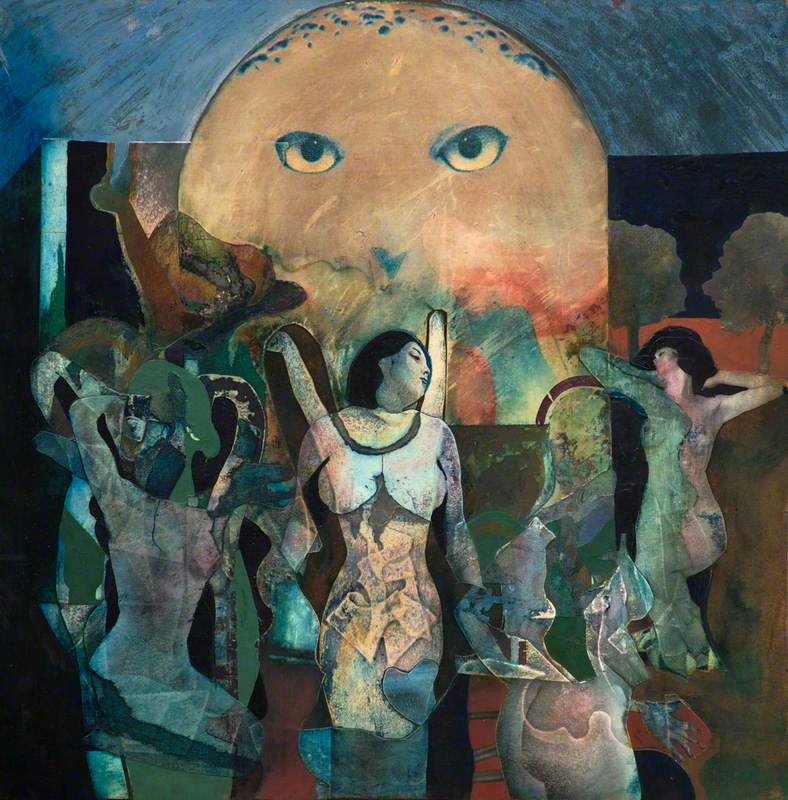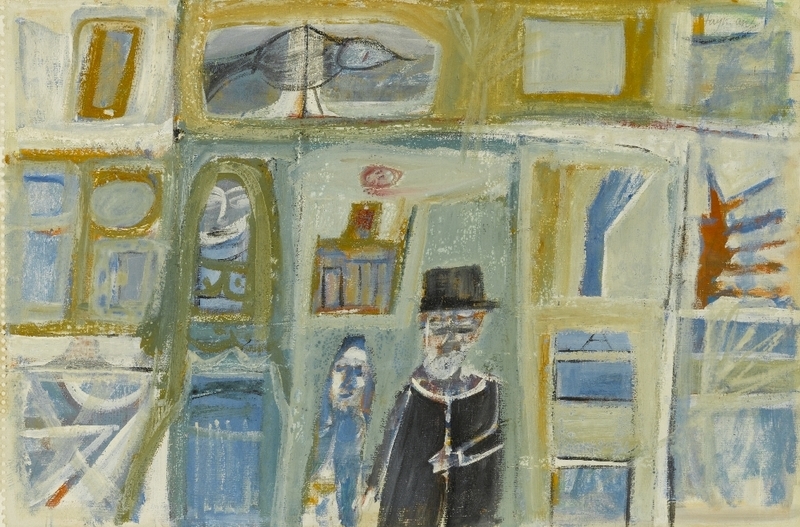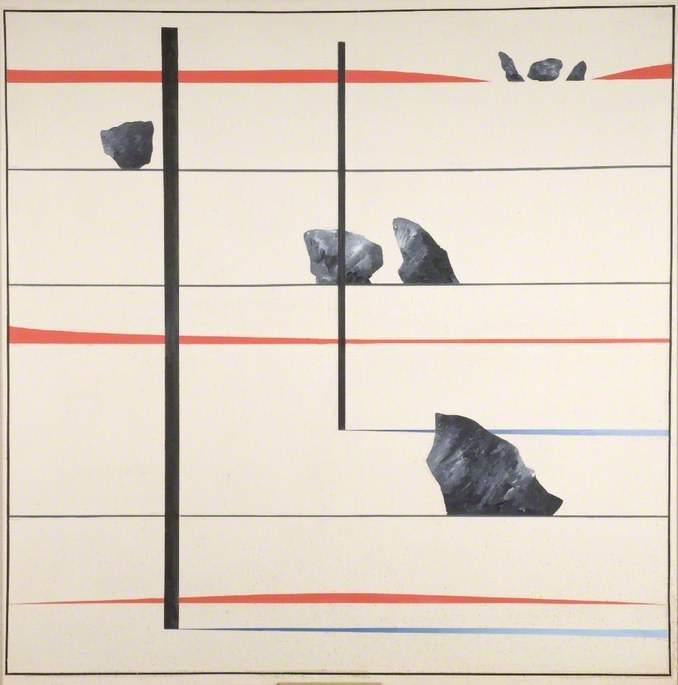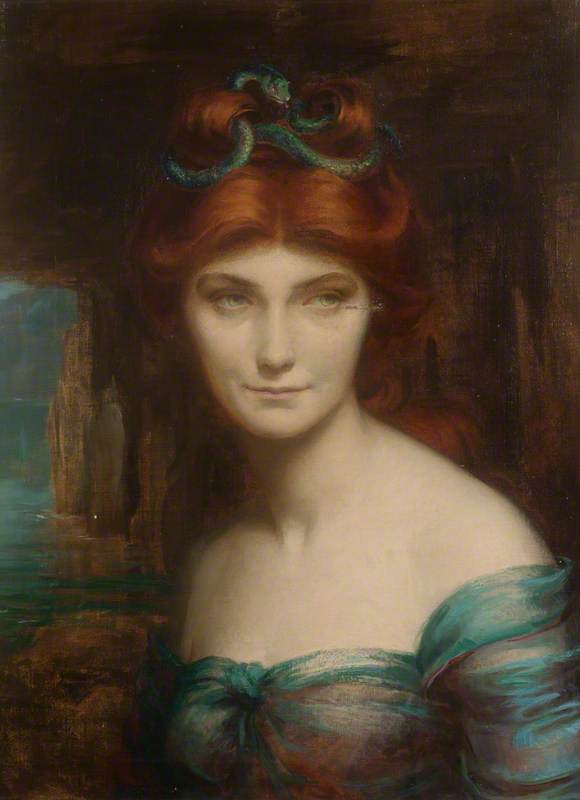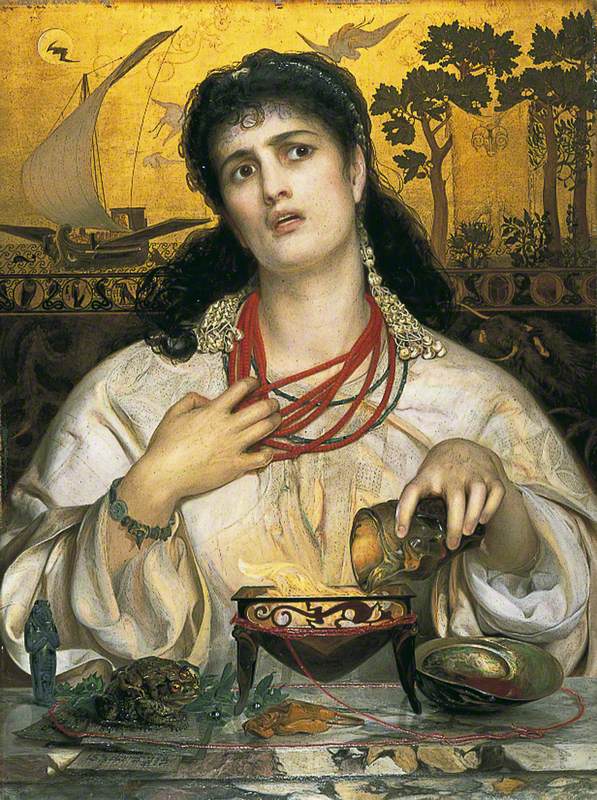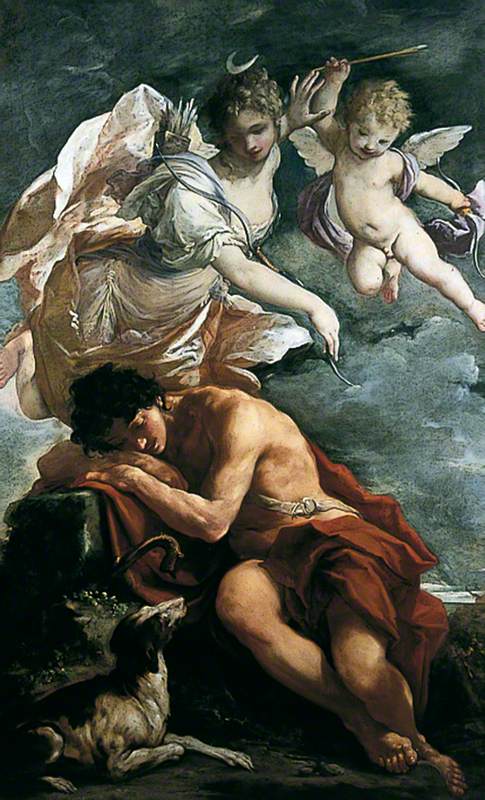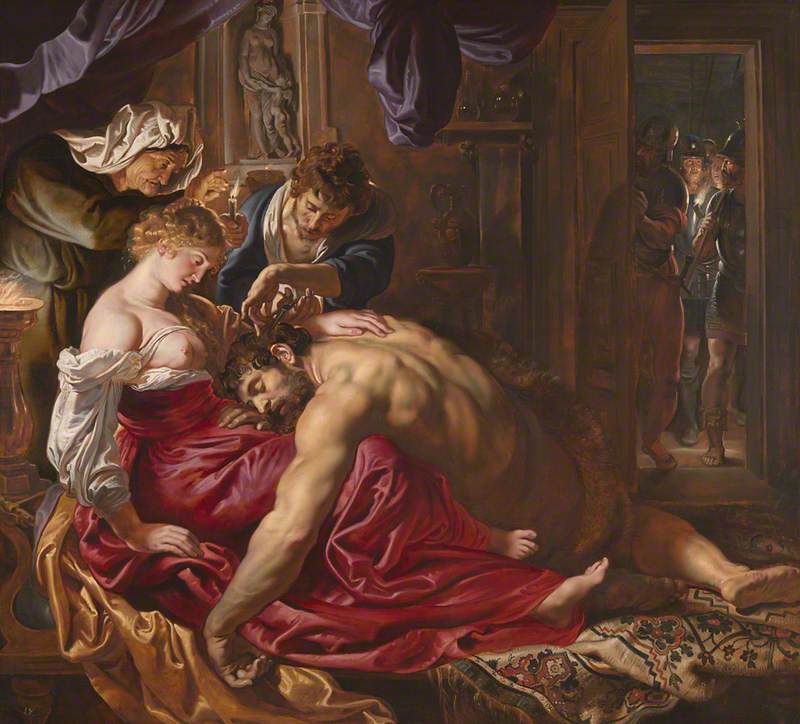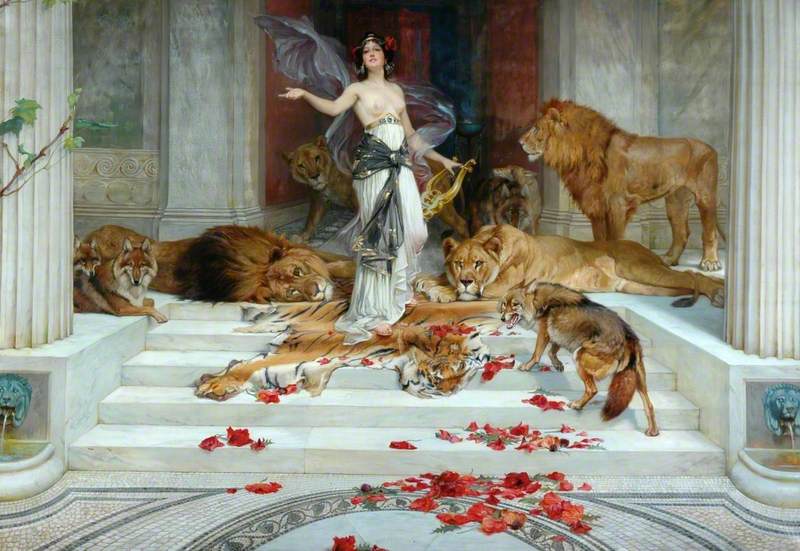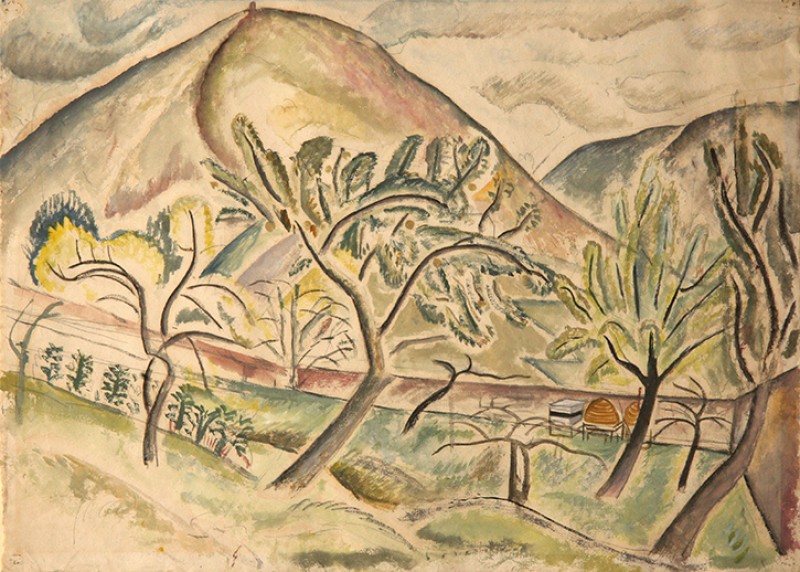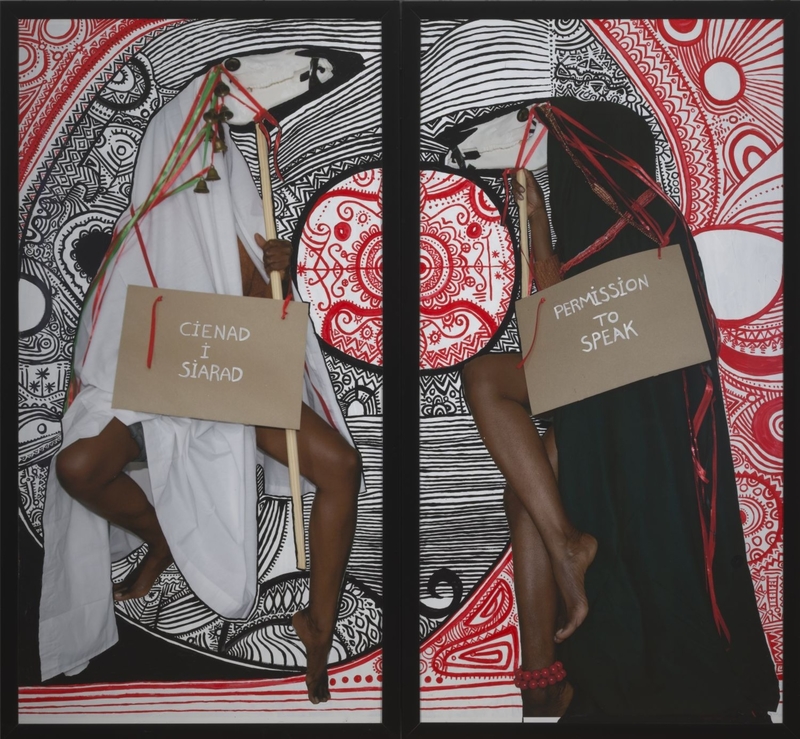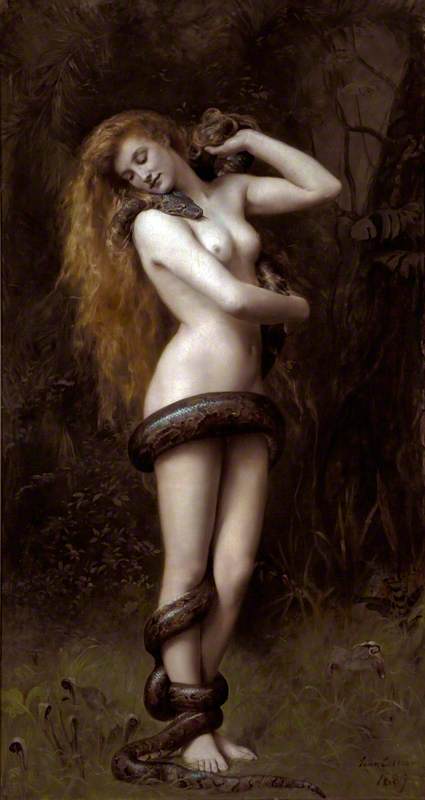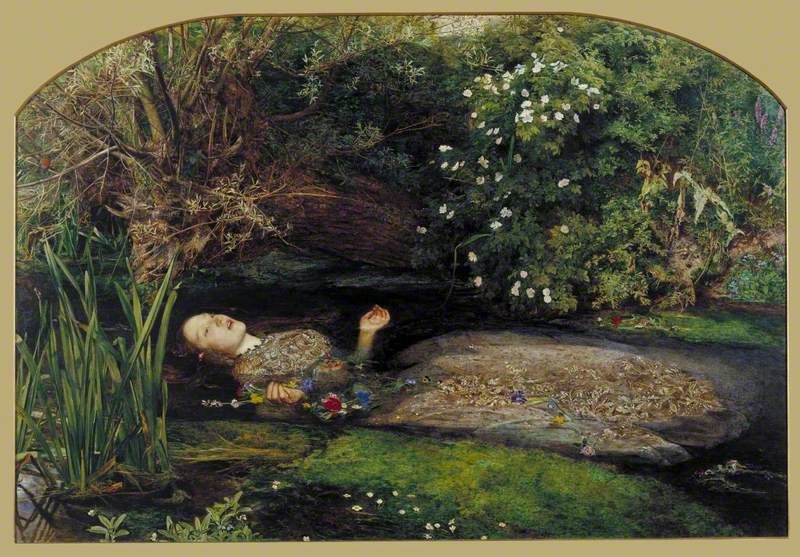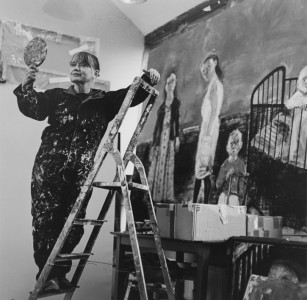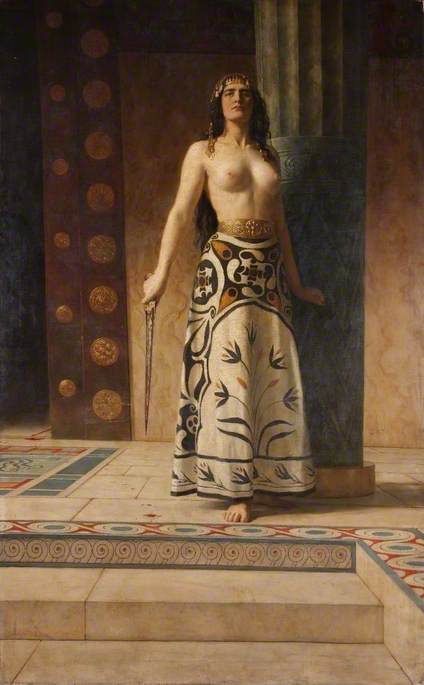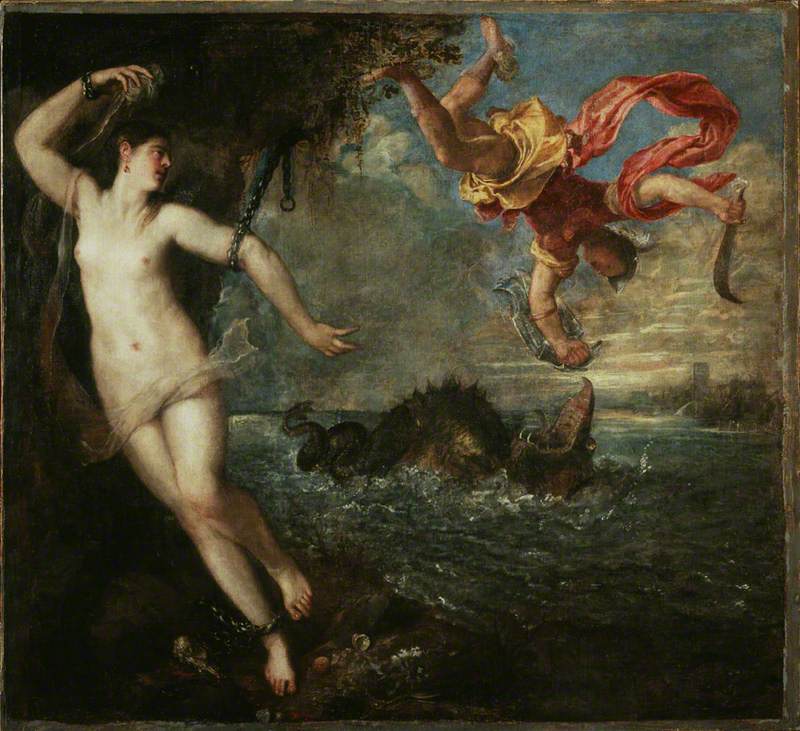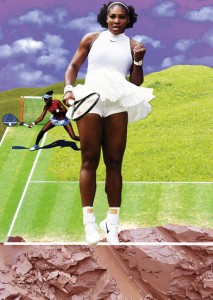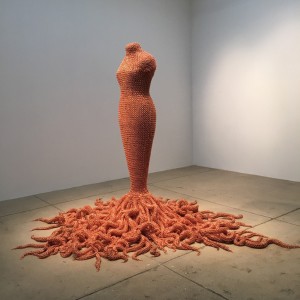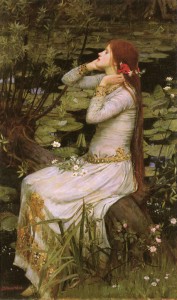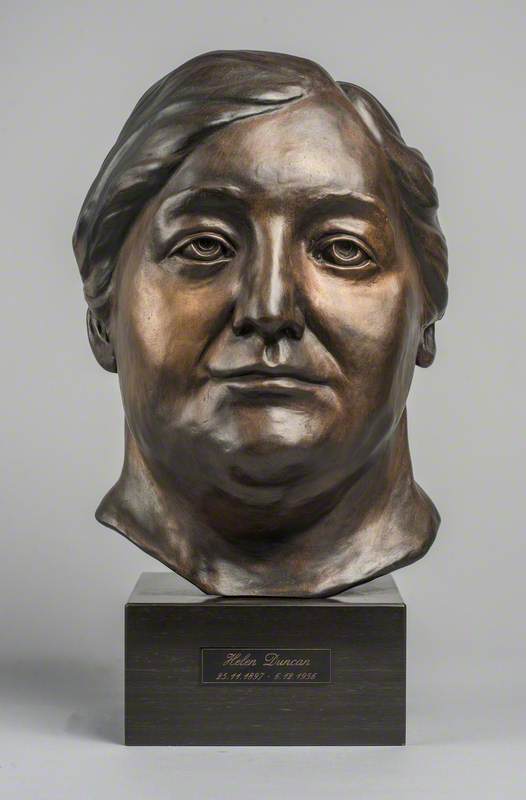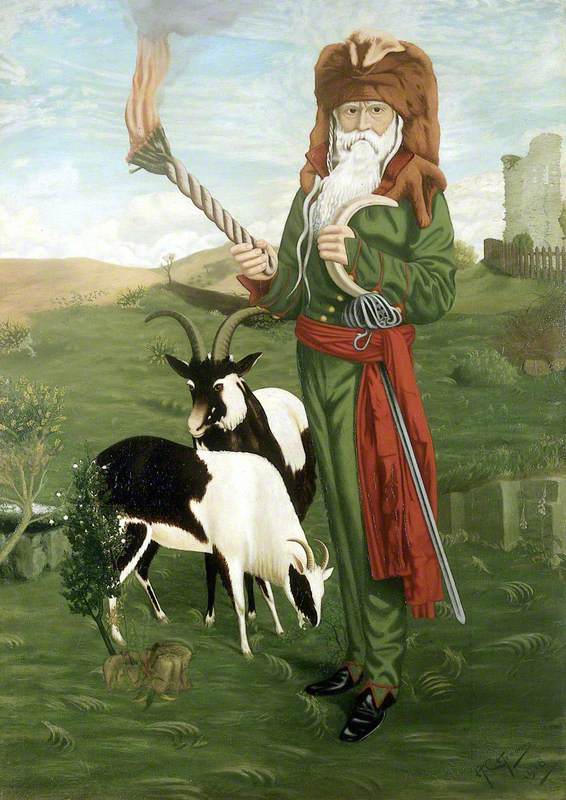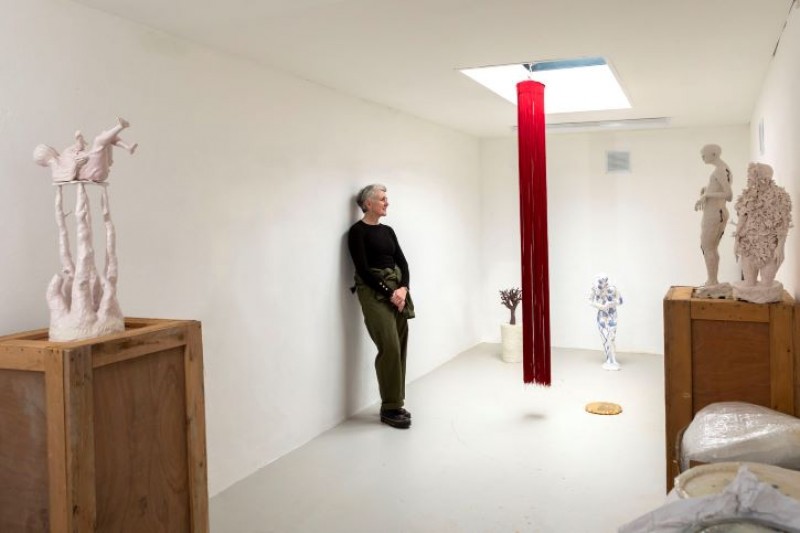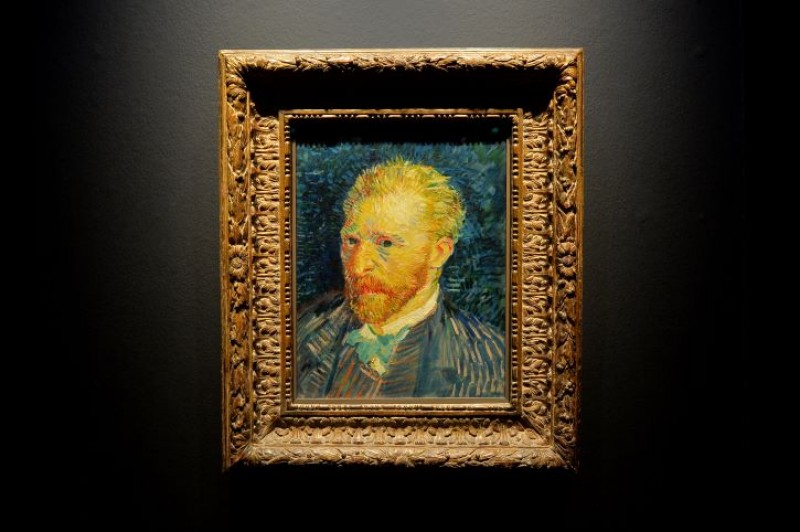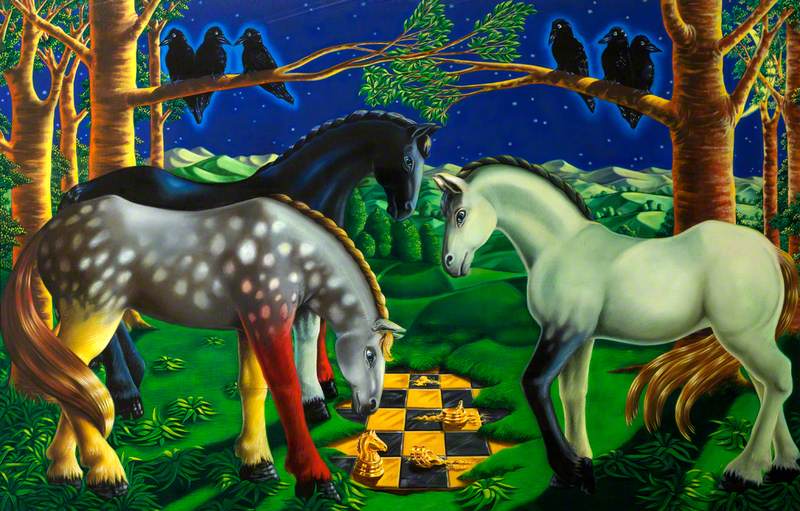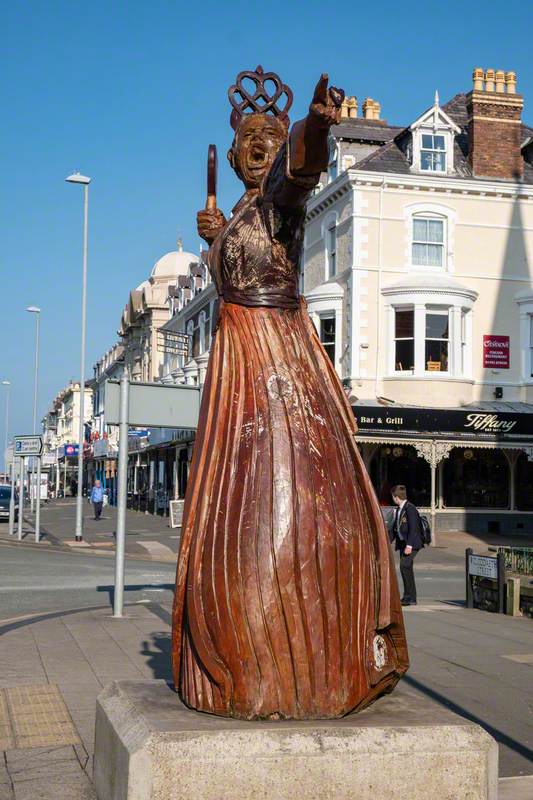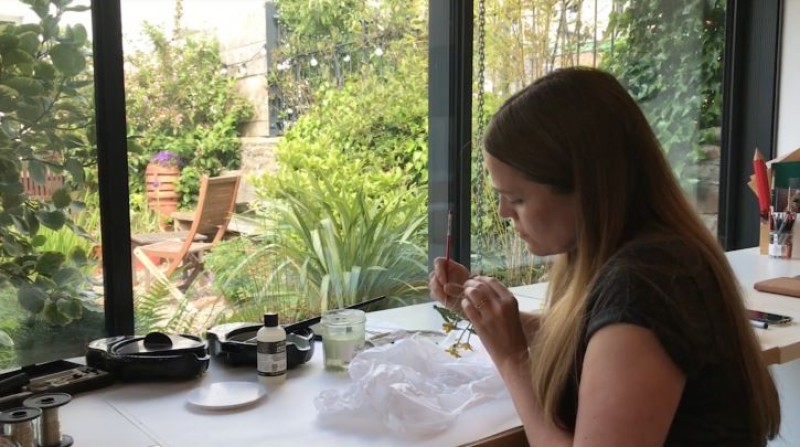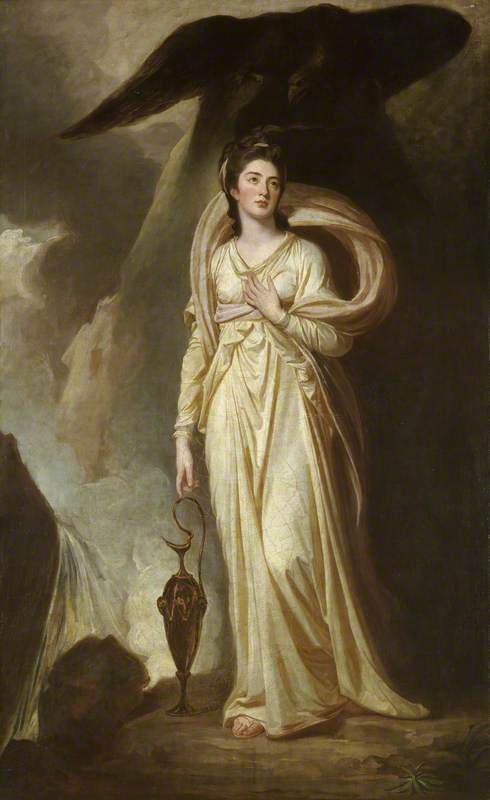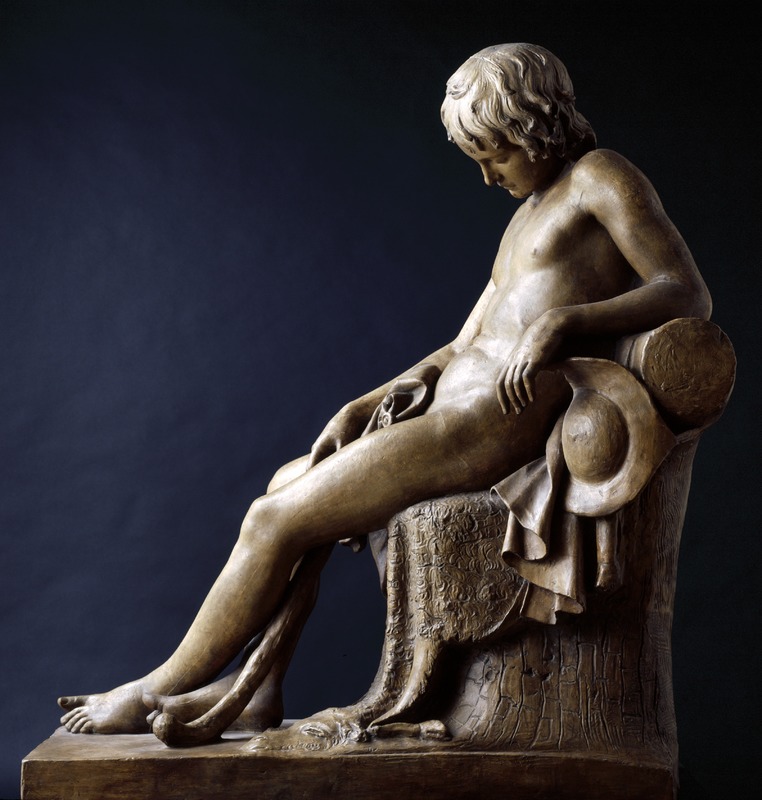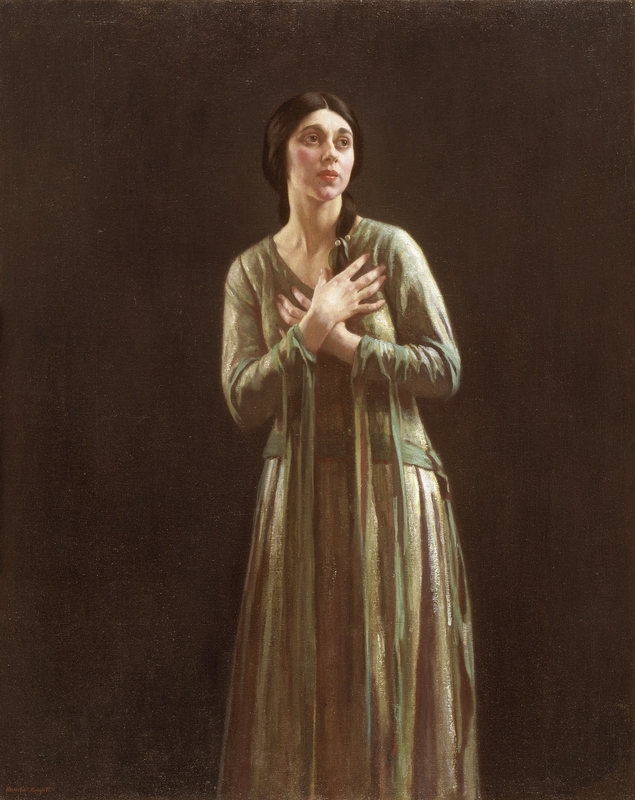Of all the stories of the Mabinogion, the wild and disparate twelfth- to thirteenth-century collection of Welsh folktales, Blodeuwedd is perhaps the most magical, exposing the duality of magic, love and the human experience. Each character in the story is both blessed and cursed, each character touched by magic.
The women of the Mabinogi seldom receive the respect they are due, often treated as no more than chattel. This is certainly true of Blodeuwedd, and the complex nature of her tale is often boiled down to that of a woman blessed with beauty and a princely husband, who falls for another and is cursed when she conspires to murder her spouse.
Made from the flowers of oak, broom and meadowsweet by the wizards Math and Gwydion, Blodeuwedd was a wilder beauty than other maidens considered the most beguiling in the land. For an artist to capture even an aspect of this wild magic is no mean feat.
Christopher Williams' Blodeuwedd; Flower Face conjures some of the character's natural beauty. The name Blodeuwedd, often translated as 'Flower face', loosely means the 'appearance of flowers' in Welsh, which would perhaps suit the piece better. Is she a woman in the image of flowers or flowers in the image of a woman? His maiden shines through the forest like sunshine through twisted branches, as much a part of the spiritual world as our physical one. In her countenance, you can see the confusion, even pain, of her creation. It is the pain of a plant ripped up by its roots.
Brought into existence to be the bride of a man she neither chose nor loved, does she see her new form as a blessing or a curse? The blooms and plants draw together in the appearance of a beautiful woman, though her true nature is still there, in the thorns beneath the bloom. In this moment of birth, she is naked and fresh as a newborn would be – or was her nakedness a choice made by the artist for another reason?
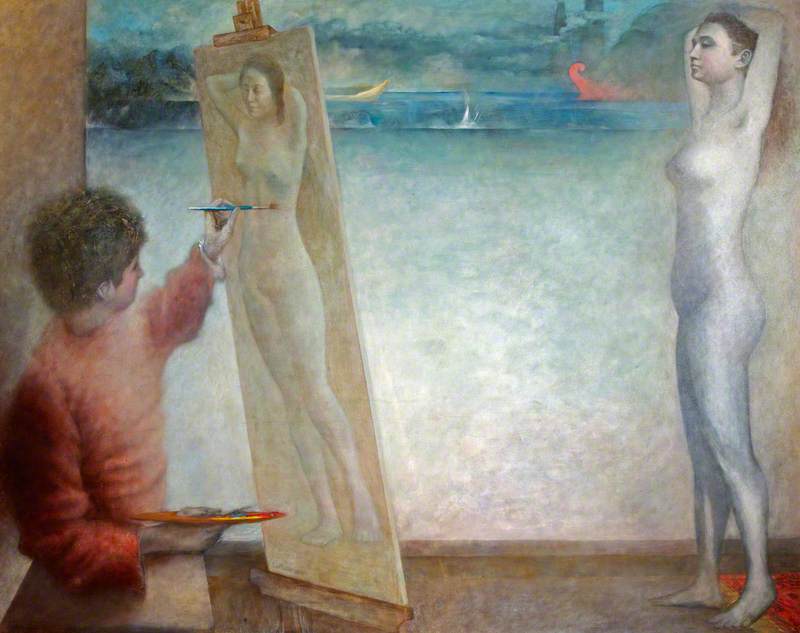
© Ivor Davies. Image credit: University of South Wales Art Collection Museum
Gwydian Conjuring the Illusion of Blodeuwedd c.1987
Ivor Davies (b.1935)
University of South Wales Art Collection MuseumHer creation is a subject tackled by Ivor Davies in his painting Gwydian Conjuring the Illusion of Blodeuwedd. As the magician Gwydion strives to conjure the most beautiful maiden from base ingredients, so too does Davies strive to capture her essence in his art.
With Gwydion as the artist, we see through the creative process. The work demonstrates the efforts made to capture her allure – but for whom? Beside the painting, the magician's muse poses in a way that should enhance her charm, increasing her appeal to the prince for whom she is created, and to any who would stop to admire the painting.
Gwydion creates a woman and makes her the most beautiful woman in the land, but based on whose standards? She is a wife for Lleu: a woman made purely for the male gaze, with no thoughts of her wants or desires. So too in the painting, Blodeuwedd's image is recreated by a male artist, for the assumed male gaze. By her appearance in the painting, the model – at least her painted representation – both shapes and destroys the illusion. The artist/wizard is blessed with his creative ability, while cursed to create only that which others see as beautiful.
The pivotal part of Blodeuwedd's tale is when she falls in love with Gronw Pebr, Lord of Penllyn. In that moment her true nature comes forth, and she sees the walls of her cage. She conspires with her new lover to kill her immortal husband – no simple task. Over the year it takes to prepare for the deed, she must hold on to the freedom her heart desires, while still caged.
This freedom can be seen in Anya Paintsil's work, Blod. Paintsil takes inspiration from her dual Welsh and Ghanaian heritage and intertwines it with the legend. The mixed material helps express freedom: a breaking down of barriers and constructed convention. The use of materials both natural and unnatural – acrylic, wool, synthetic hair, alpaca, mohair and human hair on hessian – helps weave together the worlds of fantasy and reality.
There are parallels between the artist and her subject. Being of two worlds, both must have the freedom to express themselves to understand their heritage. Paintsil's mischievous work is clearly personal but also political, incorporating a Black identity into one of the most traditional Welsh folk tales, echoing her upbringing in north Wales. This challenge of the preconceptions that associate Welshness with whiteness is as bold and necessary as Blodeuwedd's struggle for freedom.
If anyone could understand the difficulties of breaking traditional expectations, it's Blodeuwedd.
The Legend of Lleu Gyffes by John Lawrence Phillips may jar against a collection of 'fair maidens', but it helps highlight the part played by Lleu in the story, rather than dismissing him as Blodeuwedd's husband.
It is Lleu's curse to never take a human wife – a curse laid on him by his mother – that lays down the need for his uncle Gwydion to create Blodeuwedd. It is his immortality and the specific factors required to kill him that make his murder such a cold crime rather than a crime of passion. And it is his transformation into an eagle and consequent resurrection that show the depth and power of the magic in his veins.
Phillips' work is not literal, nor does it illustrate the story in any obvious way. Its bleak concrete pieces stand, not unlike the henge-like stones that mark places of import across the landscape of Wales. The largest of the stones may represent that which was placed between Gronw and the spear of Lleu, a stone that offered no protection against his retribution. The interpretation is left open, but the feeling of power and strength is a worthy representation of the cursed lord.
Blodeuwedd's punishment was as magical as her creation: she was transformed into a creature of the night. Jeremy Roberts' work tackles this cursed aspect of an owl, her final form. Despite that her transformation was supposed to be a punishment for her crimes, I've often seen it as a blessing. As an owl, she is now free, no longer bound to the expectations forced upon her as a wife, a lady and even as a human.
Roberts' Blodeuwedd echoes this freedom with images of her human form, sensually dancing, surrounded by the shapes and colours of a twilight forest. The curse of her humanity lifted, she is blessed once again with a return to nature. The vibrant darkness she inhabits is the perfect backdrop for our titular character. Above it all is the haunting face of the owl, staring moon-like at her past life.
And yet even here, in her cursed, blessed form of an owl, the artist paints images of her nude, her wild vulnerability exposed for the male gaze.
In art, as in life, things are seldom black and white. In mythology, blessings are seldom straightforward, and curses can often be seen as freeing. Perhaps there is something to be learned from this.
Dan Mitchell, writer, educator and folklorist
This content was supported by Welsh Government funding
Further reading
Charlotte Guest (trans.), The Mabinogion, J. M. Dent & Co., 1910
Jhenah Telyndru, Blodeuwedd: Welsh Goddess of Seasonal Sovereignty, Pagan Portals, 2021
Judith Shaw, 'Blodeuwedd, Celtic Flower Goddess', Feminism & Religion, 2016
